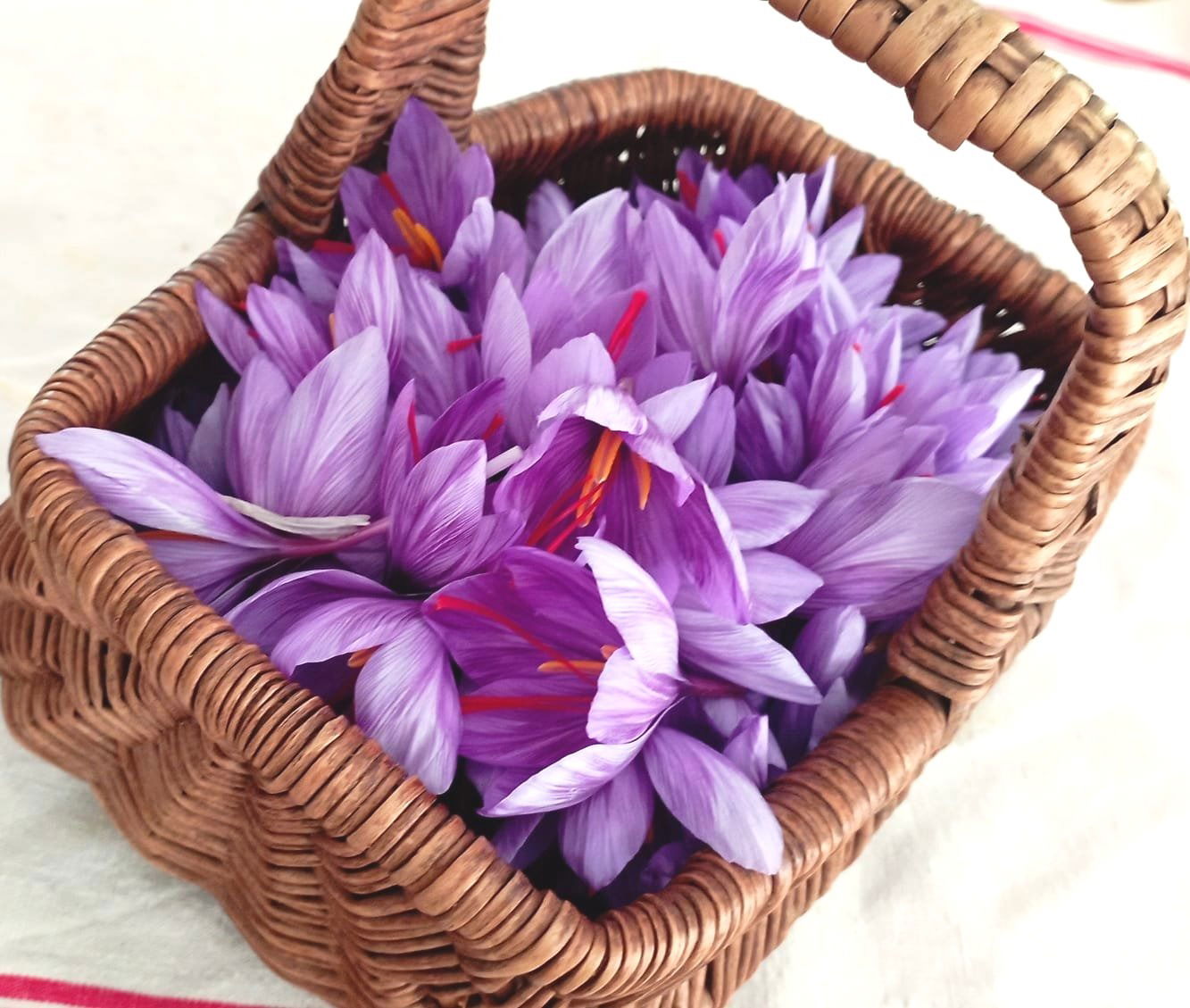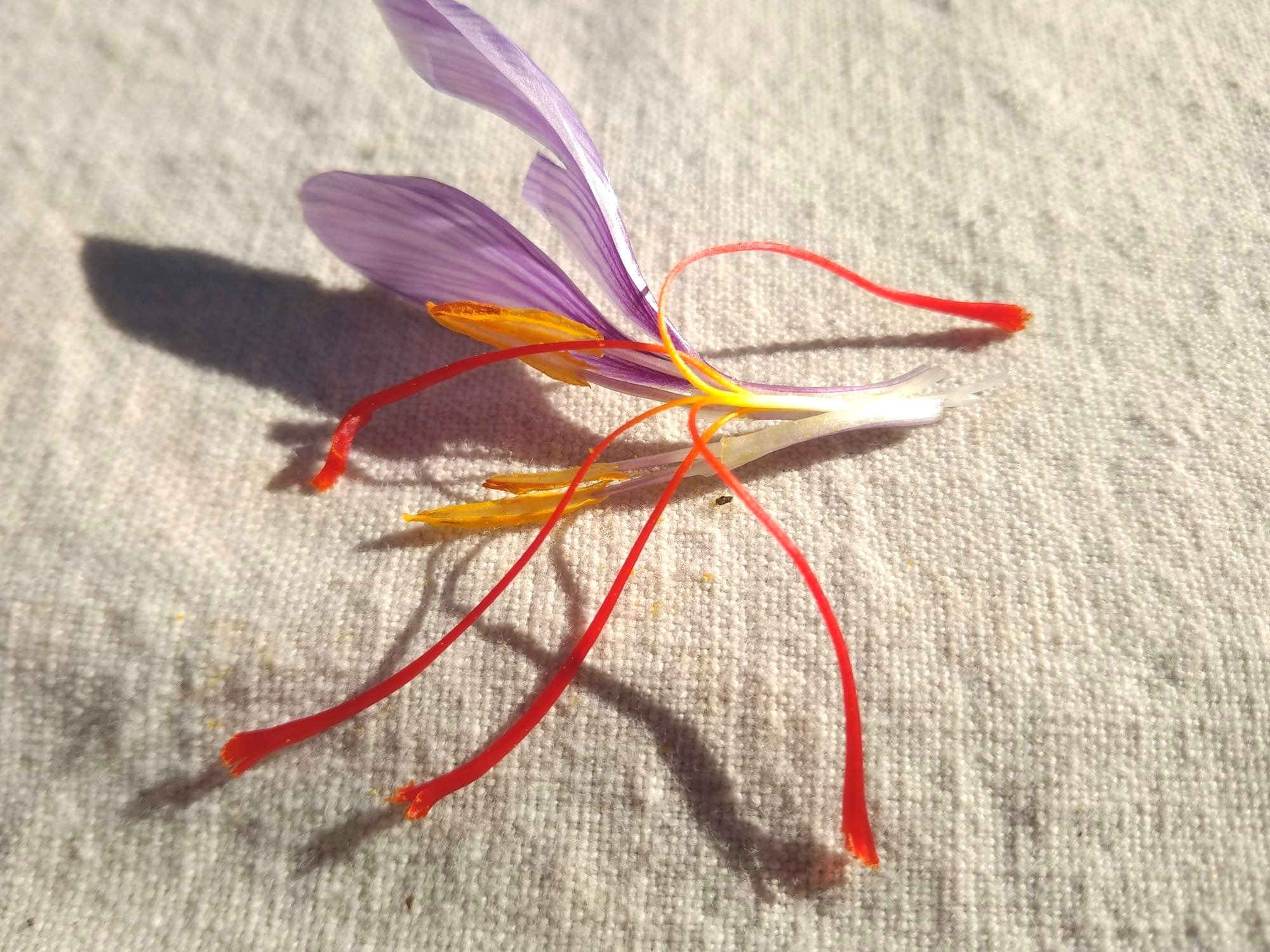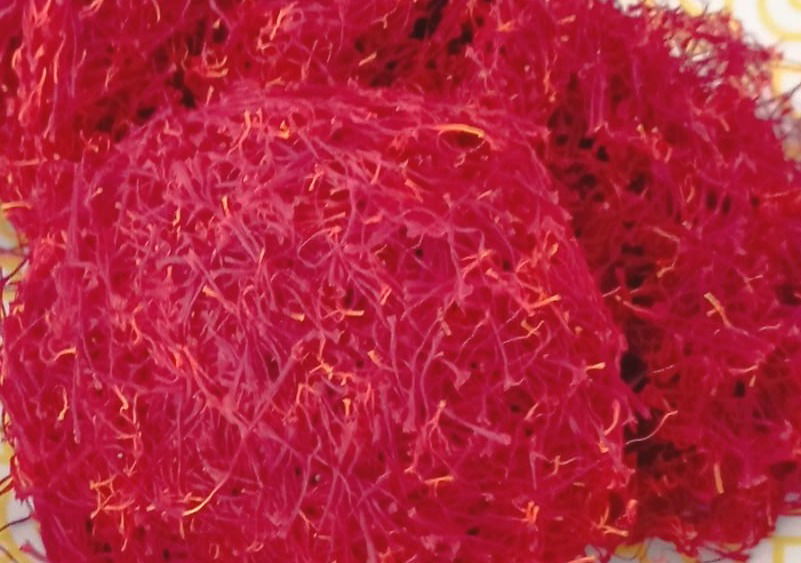SAFFRON CULTIVATION
Saffron is a fragile spice. Its cultivation process, unchanged for centuries, is extremely complex and cannot be mechanized or automated, which largely explains its price and its status as the most expensive spice in the world.
PLANTING

Saffron bulbs are planted entirely by hand, between late July and mid-September depending on the region. After preparing the soil with a rototiller and meticulous manual de-stoning, trenches of fifteen centimetres deep are dug with a sapper to place each bulb one by one. Only bulbs with a size of 7 cm or more will produce a flower in the first year of planting. Each planting line is then filled in with soil using a rake, to avoid damaging the bulbs. Every 4 or 5 rows of planting, alleys are dug with a hand shovel to allow water to run off and to protect the crops from the cold in winter.
HARVESTING

The saffron flowering period is extremely short (around 6 weeks between October and November). During this period, you need to pick each flower that has bloomed during the night every day and as early as possible, in order to protect it from weather conditions such as rain, which could wash out the pistils, or sun, which could dry them out.

HANDLING OUT
This is one of the most delicate stages, and like drying, must be carried out immediately after the day's harvest. It consists of detaching the saffron pistils from the rest of the flower, using precision scissors or your fingers. The ideal is to remove the entire yellow part of the pistil (of no interest to the taste buds), while keeping the 3 stigmas intact.

DRYING
This stage is essential, as saffron cannot be preserved properly without drying. It must be neither too weak nor too strong. During this process, the weight of the saffron must be divided by 5. So, to obtain 1 gram of dry saffron, you'll need 5 gram of fresh saffron. It takes around 200,000 flowers to obtain 1 kilogram of dry saffron.

DEHEATING
In winter and spring, planted saffron fields must be maintained by regular manual weeding. As weeds grow, they can choke the bulbs and compromise their multiplication. Any chemical weeding is to be avoided and would be harmful to the plant.

HARVESTING
As bulbs multiply every year, without uprooting, the soil becomes exhausted and the saffron plant dies. Crops must be rotated every 4 to 7 years. That's why saffron needs human intervention to perpetuate itself. Harvesting takes place in July, when the bulbs are at rest. It is done by hand (a colossal task)! Bulbs of sufficient size are replanted on another parcel of land that has lain fallow for several years to prevent the spread of disease. The other bulbs are planted in a nursery until they reach a size that allows them to flower.
